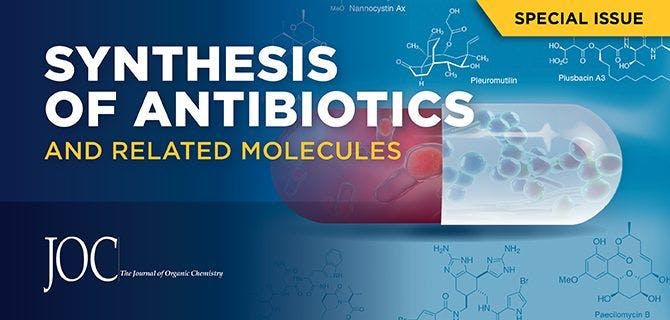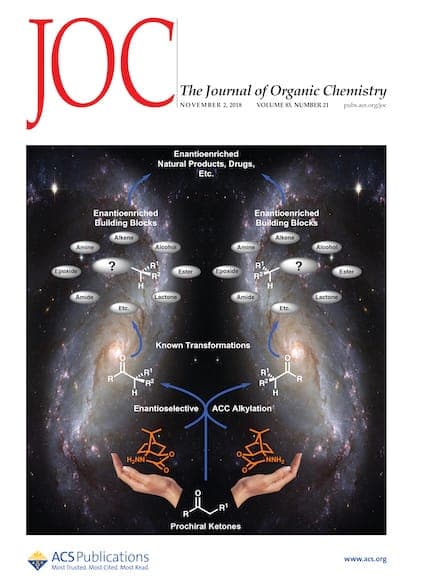This Special Issue takes a fresh look at synthetic and biosynthetic methodologies for preparing natural products, with an emphasis on antibiotics.

The Journal of Organic Chemistry’s July 6 Special Issue “Synthesis of Antibiotics and Related Molecules” takes a fresh look at synthetic and biosynthetic methodologies for preparing natural products, with an emphasis on antibiotics. These methods are difficult for chemists to develop—either when employing natural processes used by microorganisms or processes mimicked by chemical synthesis—but they are increasingly important as many disease-causing microbes become resistant to our existing antibiotic arsenal.
The Challenge of Antibiotic Synthesis
“The discovery, development, and application of antibiotics represent one the greatest scientific and public health discoveries of the 20th century,” writes Professor Kuniaki Tatsuta of Waseda University, in a guest editorial in the Special Issue. “A comprehensive appreciation of antibiotics and their benefits requires a profound understanding of their origins, evolution, functions of their molecular architecture, and specific antimicrobial activity against a variety of pathogens.” Thus envisioning and executing a total synthesis of an antibiotic “requires a critical mixture of science and ‘art,’ as demonstrated by the most impressive synthetic organic chemists of our time.”
The high complexity of natural product structures has long been a source of awe and inspiration for organic chemists, write Guest Editors Professor Mohammad Movassaghi of Massachusetts Institute of Technology and Professor Wilfred A. van der Donk of the University of Illinois, Urbana-Champaign, in their editorial on the Special Issue. In particular, they say the remarkable advances in DNA sequencing of the past decade have provided an unprecedented opportunity to understand nature’s pathways to antibiotic compounds and hence to compare synthetic and biosynthetic routes.
New Techniques Show Promise
One of the strengths of the new synthetic strategies is the ability to employ natural and genetically modified enzymes expressed in host microorganisms. Once established, this approach can be used to prepare antibiotic analogs, both to improve a compound’s pharmacological properties and to investigate its mode of action. Chemists recently have also started to focus on the metabolism of natural products by human enzymes and by our gut microbes—or what’s frequently referred to as the human microbiome—to generate derivatives with completely different bioactivities that could be clinically useful.
“Clearly, natural products remain an important pillar for organic chemistry, broadly defined,” write Dr. Movassaghi and Dr. van der Donk in their editorial. “With the promise of genome mining delivering a large number of new structures to complement a perennially strong discovery effort focused on activity-based screens, it is clear that the future is bright.”
Read The Journal of Organic Chemistry’s Special Issue “Synthesis of Antibiotics and Related Molecules.”
